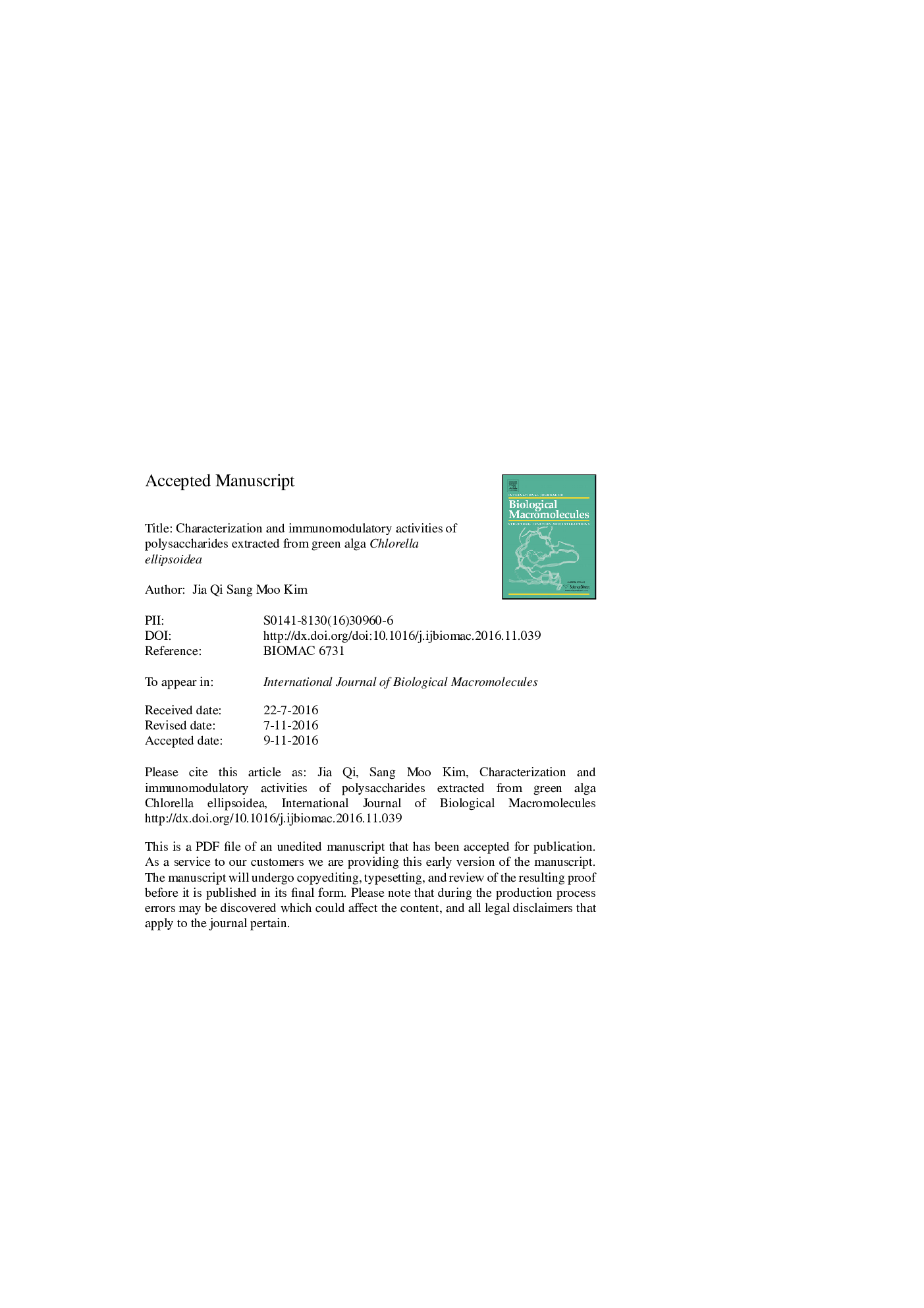| Article ID | Journal | Published Year | Pages | File Type |
|---|---|---|---|---|
| 5512382 | International Journal of Biological Macromolecules | 2017 | 40 Pages |
Abstract
Polysaccharides of green alga Chlorella ellipsoidea were extracted using hot water and fractionated using an anion-exchange chromatography to investigate their molecular characteristics and immunomodulatory activities. The crude polysaccharide and two fractions (F1 and F2) consisted mainly of carbohydrate (68.1-89.7%) and protein (2.0-11.8%) with small amounts of sulfate (1.9-6.1%) and uronic acid (0.5-6.1%). Glucose (58.8-97.6%) was the major monosaccharide of these polysaccharides, with different levels of rhamnose (0.2-11.6%), mannose (0.4-2.6%), and galactose (1.8-27.0%). The average molecular weights (Mw) of the crude, F1, and F2 were 175.8 Ã 103, 126.9 Ã 103, and 237.0 Ã 103 g/mol, respectively. The crude, F1, and F2 stimulated murine macrophage, RAW264.7 cells, to produce considerable amounts of nitric oxide (NO) and various cytokines via up-regulation of their mRNA expression by the activation of nuclear factor-kappa B (NF-κB) and mitogen-activated protein kinase (MAPK) pathways. The fraction F2 with higher Mw and protein content showed stronger immunomodulatory activity. The main backbone of the fraction F2 was mainly connected via (1 â 4)-linked glucose and (1 â 6)-linked galactose with branches at C-3 and C-4 positions in (1 â 3,4)-linked glucose and (1 â 4,6)-linked galactose residues, respectively.
Related Topics
Life Sciences
Biochemistry, Genetics and Molecular Biology
Biochemistry
Authors
Jia Qi, Sang Moo Kim,
